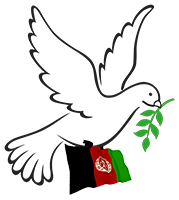The victory of the Taliban insurgency in 2021 triggered a great rupture in Afghanistan’s human rights movement. Almost overnight, nearly all the prominent human rights defenders were forced into exile. The repression and authoritarianism of the Emirate has shrunk the space available for human rights work, making it more difficult – but not impossible.
This AAN thematic report looks at the state of the Afghan human rights movement before and after the Taliban takeover in 2021. It highlights how the operating environment for civil society has been flattened by a host of repressive policy edicts and laws which are rigorously implemented by the IEA, its intelligence agency, police and enforcers from the Ministry for the Propagation of Virtue and the Prevention of Vice. Freedom of expression and assembly have all but evaporated. Women’s lives are subject to the greatest control, with diktats even proscribing them speaking in loud voices or singing.
The IEA’s repressive tendencies combine religious and cultural conservativism imbued with very hierarchical authoritarianism. For human rights defenders, this mix is a catastrophe. From their current vantage point, it would be easy to idealise the Republic era, which was far from ideal – rife with corruption, high levels of risks and obstruction – it did nevertheless allow some room for legal reform, public advocacy and international support. The Emirate has codified its most patriarchal and authoritarian impulses into law, enforcing them through an effective apparatus of surveillance and punishment. For most human rights defenders, this meant that direct advocacy with the authorities, visible forms of documentation and traditional campaigning have largely disappeared.
In the face of this, some human rights defenders have found new networks and new ways of working both inside Afghanistan and from exile, building digital campaigns, lobbying to hold back the ‘normalisation’ of the Islamic Emirateand pursuing accountability through universal jurisdiction and institutions like the International Criminal Court. Others have found crevices in an authoritarian façade where work can be done, sometimes under the radar, often at the local level, sometimes through interlocutors. New voices have emerged, including from the spontaneous eruption of female protestors from diverse backgrounds with a clear political message, exemplified by the slogan: Nan, Kar, Azadi (Bread, Work, Freedom). Despite the risks, they chose resistance and disruption and are still making their presence felt, even if their ability to take to the streets has been forcibly blocked.
The Afghan human rights movement has been battered since the fall of the Republic, but human rights work is often an act of hope against the odds. The defenders featured in this report are adjusting their expectations, recognising that the path to justice will be long, uneven, and marked by painful setbacks. Yet they continue, not because victory is assured, but because the alternative –silence and surrender – is unthinkable. This report sheds light on their continuing struggle – and their enduring hope.
Edited by Kate Clark and Roxanna Shapour
You can preview the report online and download it by clicking here or the download button below.
 Afghanistan Peace Campaign
Afghanistan Peace Campaign